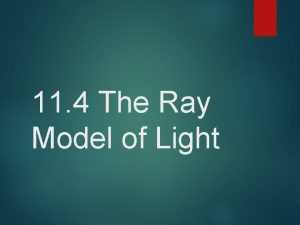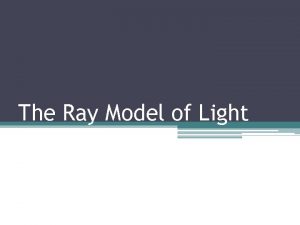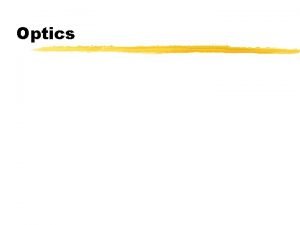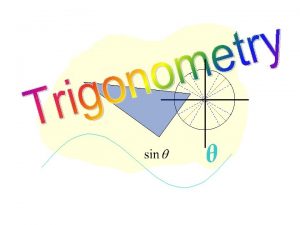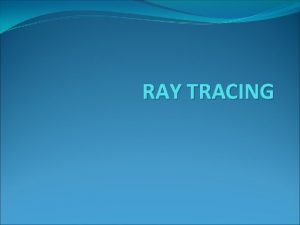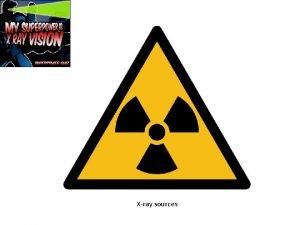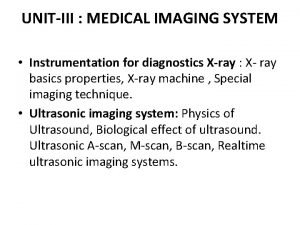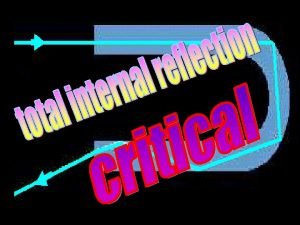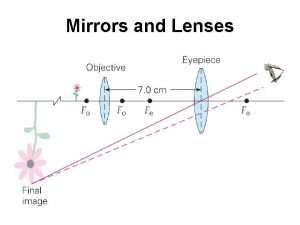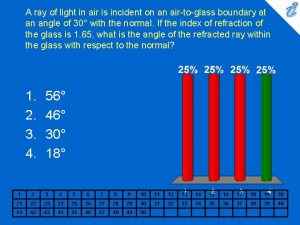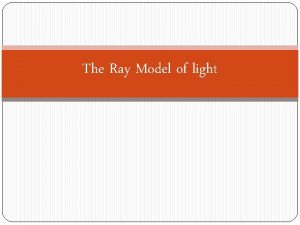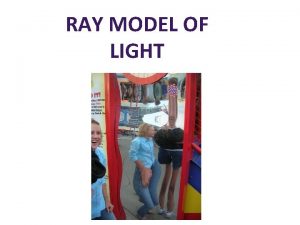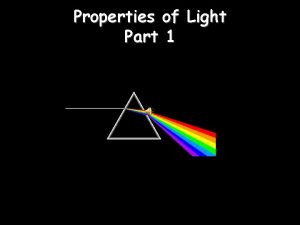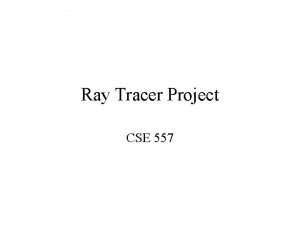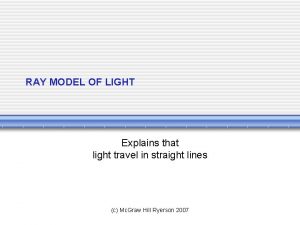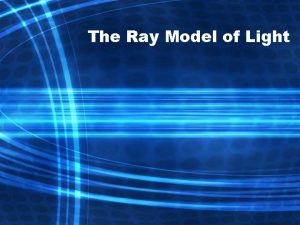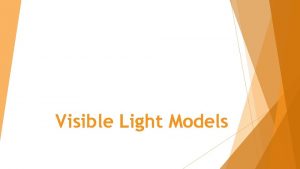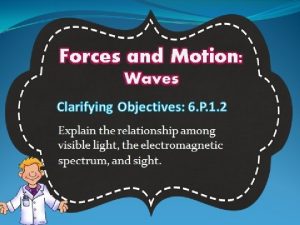The Ray Model of Light Part 1 Properties















- Slides: 15

The Ray Model of Light

Part 1 – Properties of Light travels in straight lines: Laser

Light travels VERY FAST – around 300, 000 kilometres per second. At this speed it can go around the world 8 times in one second.

• A luminous object like a candle radiates light in all directions • We can use a light ray, which is a line and arrow showing the direction light is travelling, to show this.

• Using Light rays to show the path of light striking an object is called Geometric Optics • When light emitted from a source (the Sun) strikes an object (Earth), it is called Incident Light

3 Classifications of Matter Recall: • A transparent object lets light pass through it easily

3 Classifications of Matter Recall: • A translucent object allows some light to pass through

3 Classifications of Matter Recall: • An opaque material does not let any light pass through it

• An image is a reproduction of an original object that is produced through the use of light • A mirror is any polished surface that exhibits reflection • Reflection is simply the bouncing back of light from any surface

Part 2 - Reflection from a mirror: Normal Reflected ray Incident ray Angle of incidence Angle of reflection Mirror

Activity • In your lab groups, try Activity 11. 5 on Page 482 and 483

The Law of Reflection Angle of incidence = Angle of reflection In other words, light gets reflected from a surface at _____ angle it hits it. The same !!!

Clear vs. Diffuse Reflection Smooth, shiny surfaces have a clear reflection: Rough, dull surfaces have a diffuse reflection. Diffuse reflection is when light is scattered in different directions

Specular Reflection • Specular reflection is the reflection of light off a smooth surface The water acts like a plane mirror Disco rules!

Using mirrors Two examples: 2) A car headlight 1) A periscope
 Ray model of light
Ray model of light Light light light chapter 23
Light light light chapter 23 Light light light chapter 22
Light light light chapter 22 Chapter 22
Chapter 22 Transparent ray model
Transparent ray model Ray model of light
Ray model of light The ray model
The ray model The ray model of light
The ray model of light Terminal ray meaning
Terminal ray meaning Ray tracing and ray casting
Ray tracing and ray casting Properties of x ray ppt
Properties of x ray ppt Properties of x ray
Properties of x ray A ray of light travels from an optical denser
A ray of light travels from an optical denser Types of mirrors and lenses
Types of mirrors and lenses A ray of light in air is incident
A ray of light in air is incident Spectrum of light waves
Spectrum of light waves
